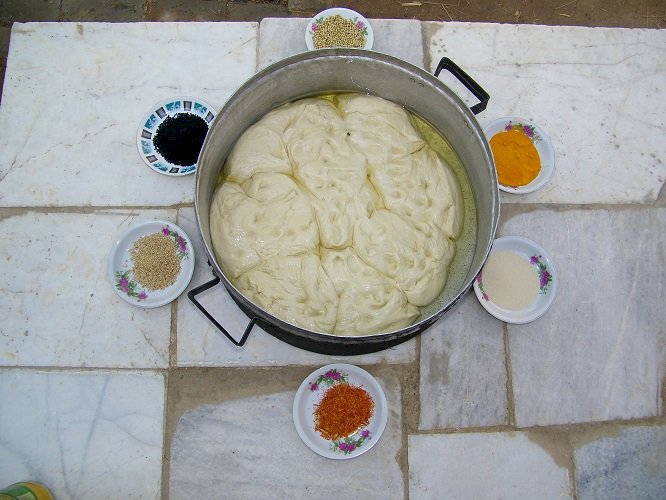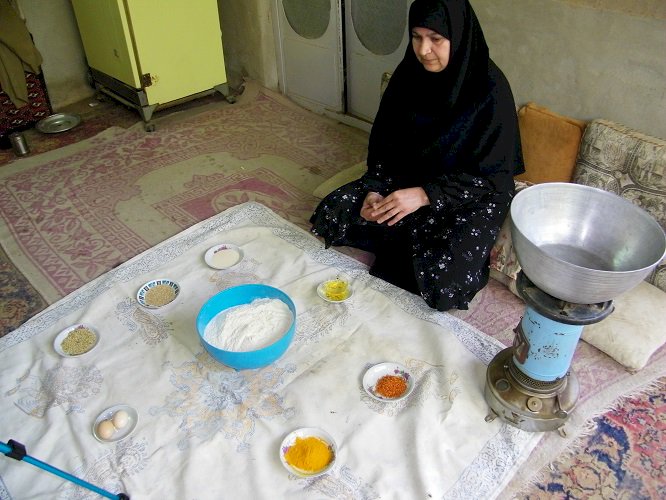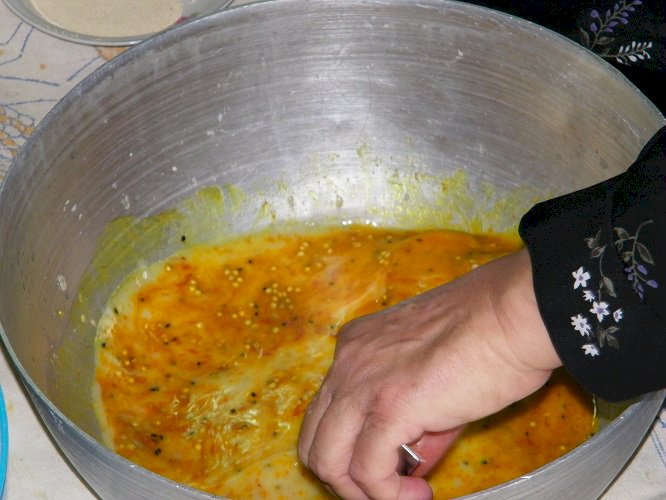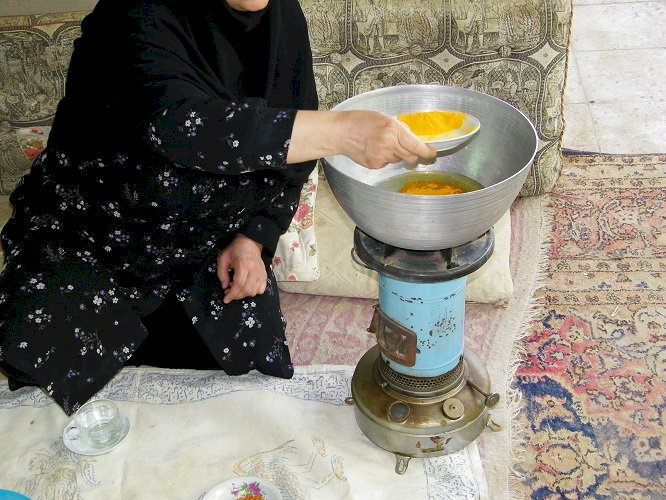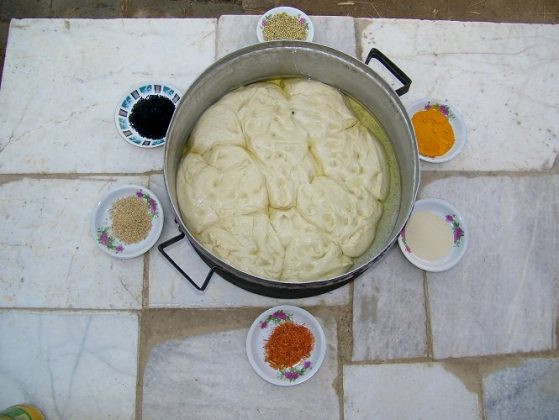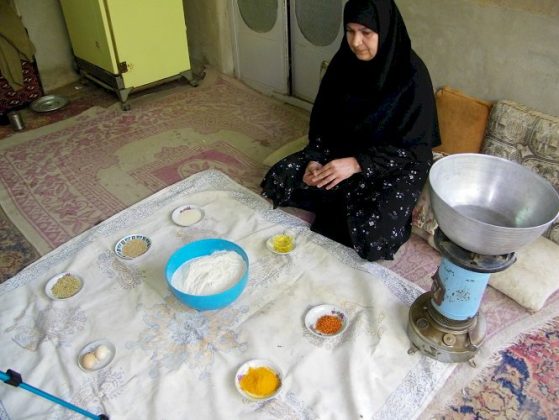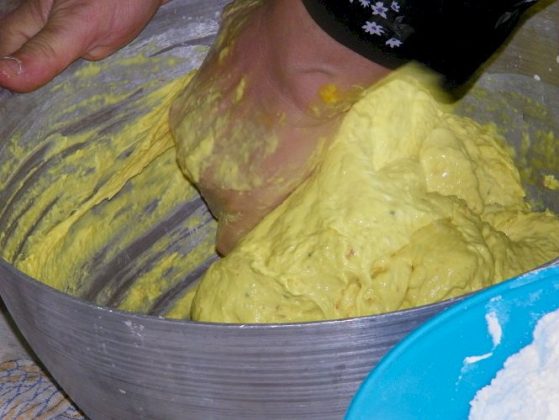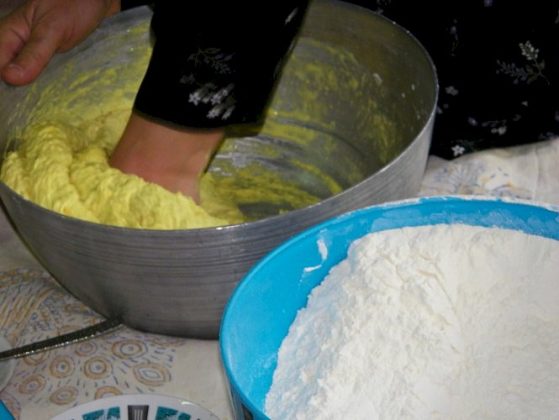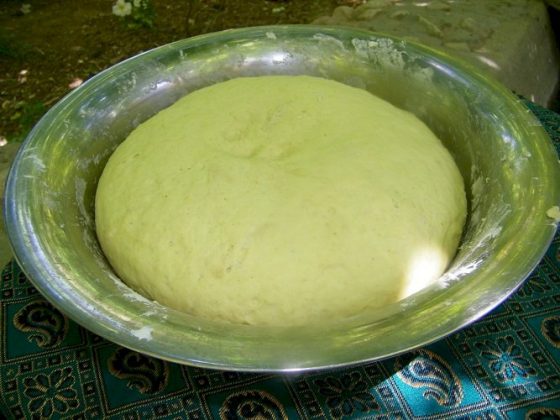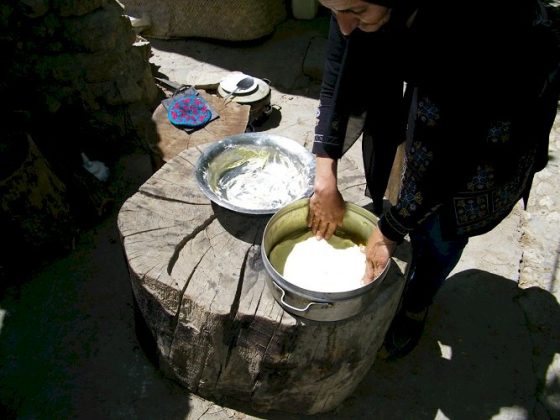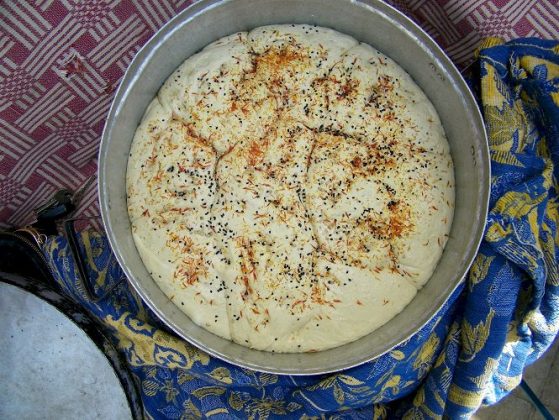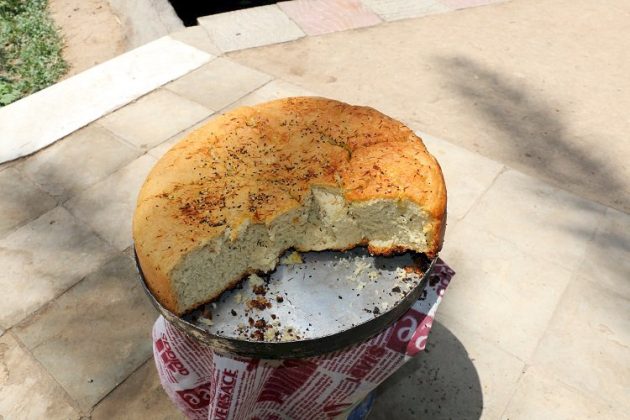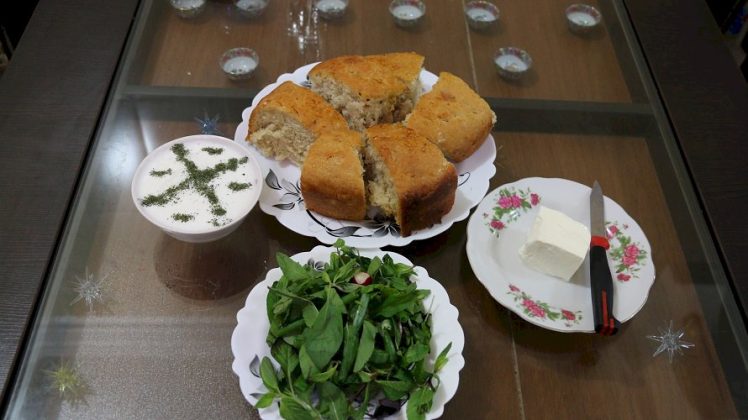The bread is made of wheat flour, baker’s yeast, cow ghee, eggs, and salt. For decoration, coriander, black seeds, yellow flowers, and sesame are used, which make the bread very healthy and nutritious. Komaj can be served either as the bread besides the main dish or as the main dish itself in case of a lack of other types of food.
It is very easy to make Yazdi Komaj, which can be baked inside a pan. It can be served with bread and walnuts for breakfast or as an evening snack.
You can either use the yeast for Barbari and Sangak bread or you can mix flour and yeast.
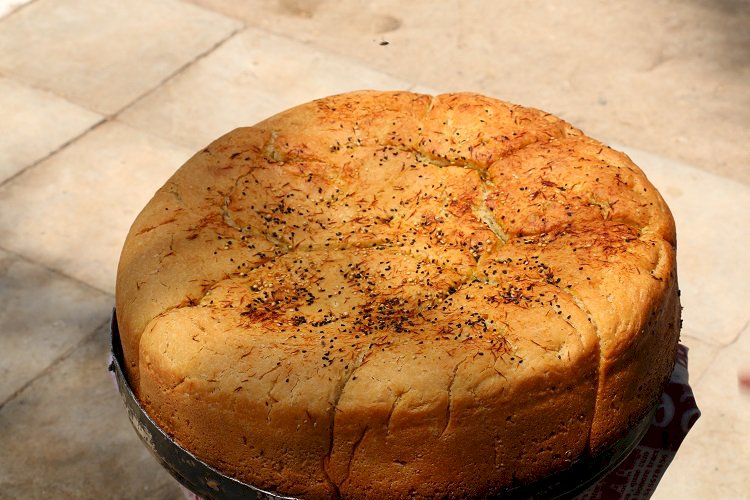
Ingredients
- One and a half glasses of flour (or you can use a dollop of Barbari bread dough in the place of flour, yeast, water, and salt)
- One tablespoon of yeast
- A glass of hot water
- One non-full teaspoon of salt
- One egg
- Two to three tablespoons of yogurt
- One tablespoon of black seeds
- One tablespoon of unground coriander seeds
- One table spoon of dried aromatic herbs such as tarragon (optional)
- One non-full teaspoon of turmeric or mixed spices (optional)
- Liquid oil
- Safflowers
Stage-by-stage cooking recipe
- If there is no Barbari dough available, mix one and a half glasses of flour with lukewarm water gradually as long as necessary for the dough to not stick to your hands. Add water little by little so that the dough does not loosen. Then, mix the yeast with a few spoons of warm water and half a tablespoon of sugar, mix it and pour it on the dough after 5 minutes and knead the dough by hand for 3 to 4 minutes.
Put the dough in a container that is at least twice the size of it because the volume doubles when the dough is ready. Put the dough in the container and place it somewhere warm. The dough will swell after about an hour. Whenever the volume of the dough doubles, it means it is ready.
- Mix the egg, yogurt, black seeds, coriander seeds, safflowers, dried aromatic vegetables, and salt (if you’re using Barbari dough, no salt is needed). Stir, and then pour it on the dough.
- Knead the dough with your hands or with a spoon well enough for the ingredients to reach everywhere in the dough.
- Put oil on the surface of a non-stick frying pan or a pot, and let some of the oil stay. The pan should neither be too big nor too small. In fact, when you put the dough in the pan, it shouldn’t have a thickness of more than 3 centimeters. That is necessary for the dough to bake well.
- Turn the heat on. Once the pan is warm, spread the dough on the pan. The dough would loosen up a little because of the ingredients you have added to it, but don’t worry.
When the margins of the dough begins to boil, turn the heat to a very low. You can even use a heat diffuser. Put the lid of the pan on so the dough will gradually bake to its core in almost 20 minutes.
When one side of the Komaj is baked and turns golden, raise it with a tray or two spatulas, add a little oil to the surface of the pan again, put the lid back on until the other side bakes for some 10-15 minutes and turns golden.
Once both sides turn golden, your Yazdi Komaj is ready to serve.
More images from the Yazdi Komaj baking process
Although Komaj is today baked using modern cooking utensils, it has to be baked, like all other traditional snacks, on a non-flaming fire. In old times, camel handlers would put the dough in a closed pot, or a Komajdan (Komaj holder) as it was known at the time, and would bake it on a fire that was lit for tea or to provide warmth during stops.
The following images show the different stages of baking Komaj in Yazd. They were published by Miras-e Ariya News Agency:
Questions about the baking of Komaj:
1- What is safflower? And is it absolutely necessary for the baking of Yazdi Komaj?
Safflower will give away coloring to the dough. It is like saffron, but is much cheaper. You can find it in stores selling herbs. In case you fail to find safflower, add a half teaspoonful of turmeric or baked saffron to the dough.
2- Would it make a difference to bake Yazdi Komaj in the oven?
No. If you plan to bake it in the oven, put a small pot of water in the corner of the oven so that the inside of the oven becomes moist. Although Komaj is today baked using modern cooking utensils, it has to be baked, like all other traditional snacks, on a non-flaming fire. In old times, camel handlers would put the dough in a closed pot, a Komajdan (Komaj holder) and would bake it on a fire that was lit for tea or to provide warmth during stops.
